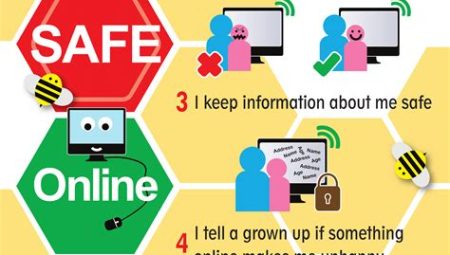In today’s digital age, social media has become an integral part of our daily lives. Whether it’s connecting with friends and family, networking for business opportunities, or staying up-to-date with the latest trends, the benefits of social media are undeniable. However, with great interconnectedness comes great risk. In this blog post, we will delve into the top 5 social media risks and discuss how you can protect your privacy in the digital realm.
We will start by identifying the various social media risks that exist, from privacy breaches to social engineering attacks. Understanding the consequences of these risks is crucial in order to take the necessary precautions. We will also be evaluating the scope of social media privacy risks and providing useful tips on how to implement strong passwords and two-factor authentication to safeguard your accounts. Additionally, we will explore how you can secure your personal information on social media platforms and navigate privacy settings for maximum protection. Join us as we discuss the importance of monitoring your online presence and strengthening your digital footprint, and learn how to avoid oversharing and limit access to your personal content. By the end of this post, you’ll be well-equipped to protect yourself on social media and navigate the digital world with confidence.
Table of Contents
Identifying the Social Media Risks
When it comes to social media, it’s important to identify the risks associated with sharing personal information online. One of the main risks is the potential for privacy breaches that can result in sensitive information being exposed to the public. Additionally, online scams and phishing attacks are prevalent on social media platforms, posing a significant risk to users.
Another risk to consider is the misuse of personal data by third-party applications and advertisers. Many social media platforms collect a significant amount of user data, which can be exploited for targeted advertising or even identity theft. It’s crucial to be aware of how your data is being used and take steps to limit access to it.
Furthermore, cyberbullying and online harassment are major risks associated with social media. The anonymity and accessibility of the internet can embolden individuals to engage in harmful behaviors, making it essential to be mindful of how we interact with others online and how we can protect ourselves from such attacks.
Identifying these social media risks is the first step in taking proactive measures to protect yourself and your personal information online. By understanding these potential dangers, you can develop strategies to safeguard your privacy and maintain a secure online presence.
Understanding the Consequences of Privacy Breaches
Privacy breaches can have serious implications for individuals and organizations alike. When personal information is compromised, it can result in identity theft, financial loss, and reputational damage. It is important to understand the potential consequences of privacy breaches in order to take the necessary precautions to protect your personal information.
Identity theft is one of the most common consequences of privacy breaches. Cybercriminals can use stolen personal information to open fraudulent accounts, make unauthorized purchases, or commit other crimes in the victim’s name. This can result in financial devastation and damage to the victim’s credit.
Furthermore, privacy breaches can lead to reputational damage. If personal information is exposed, it can be used to tarnish an individual’s or organization’s reputation. This can have lasting effects on trust and relationships with others.
It is crucial to take proactive steps to prevent privacy breaches and mitigate their potential consequences. This includes implementing strong password practices, using two-factor authentication, and staying informed about common social engineering attacks. By educating yourself about the risks and consequences of privacy breaches, you can better protect yourself and your personal information.
Evaluating the Scope of Social Media Privacy Risks
Social media has become an integral part of our daily lives, allowing us to connect with friends, family, and the world at large. However, with the increasing use of social media platforms, there is a growing concern about privacy risks associated with sharing personal information online.
It is crucial to evaluate the scope of these privacy risks to understand the potential consequences and take necessary precautions. One of the main privacy risks of social media is unauthorized access to personal information, which can lead to identity theft, financial fraud, or even physical harm.
Another privacy risk to consider is the potential for data breaches, where personal information is exposed to unauthorized parties. This can result in reputational damage, financial losses, and emotional distress for the individuals affected.
By evaluating the scope of these privacy risks, individuals can make informed decisions about what information to share, who to share it with, and how to protect themselves from potential privacy breaches. It is important to be aware of the risks and take proactive measures to safeguard personal information while using social media platforms.
Implementing Strong Passwords and Two-Factor Authentication
Ensuring the security of your online accounts is crucial in today’s digital age where cyber threats are becoming more prevalent. One of the most effective ways to protect your accounts is by implementing strong passwords and two-factor authentication (2FA). Strong passwords are essential for preventing unauthorized access to your accounts, while 2FA adds an extra layer of security by requiring users to provide two different forms of authentication before gaining access.
When it comes to creating strong passwords, it’s important to use a combination of uppercase and lowercase letters, numbers, and special characters. Avoid using easily guessable passwords such as 123456 or password, and opt for longer, more complex combinations to minimize the risk of a security breach.
Furthermore, enabling 2FA on your accounts adds an additional layer of protection by requiring a second form of verification, such as a text message code or biometric data, in addition to your password. This significantly reduces the likelihood of unauthorized access, even if your password is compromised.
By implementing strong passwords and two-factor authentication across all of your online accounts, you can significantly reduce the risk of unauthorized access and protect your personal information from potential security breaches. Taking these proactive measures can provide peace of mind and enhance the overall security of your online presence.
Securing Personal Information on Social Media Platforms
When it comes to securing personal information on social media platforms, it is crucial to be aware of the potential risks and take necessary precautions to protect your data. With the increase in online presence, the risk of data breaches and privacy invasions has also become more prominent. It is important to understand the various security measures and privacy settings that are available on different social media platforms in order to safeguard your personal information.
One of the most important steps in securing personal information on social media platforms is to use strong passwords and enable two-factor authentication. This adds an extra layer of security to your account and makes it more difficult for unauthorized users to gain access to your personal data. It is also essential to regularly update your passwords and avoid using easily guessable information such as your birthdate or pet’s name.
Another crucial aspect of protecting personal information on social media platforms is to limit the amount of personal content that you share online. It is important to be mindful of the information that you post, as well as the privacy settings that determine who can view your content. Avoid oversharing and be selective about the information that you share, as this can help prevent potential privacy breaches.
Lastly, monitoring your online presence and strengthening your digital footprint can also contribute to securing your personal information on social media platforms. Regularly review your privacy settings, revoke access to third-party applications that have unnecessary permissions, and be cautious of the information that you provide to external sources. Being proactive about protecting your personal information can help mitigate the risks associated with using social media platforms.
Navigating Privacy Settings for Maximum Protection
When it comes to protecting your privacy on social media platforms, one of the most important things you can do is to navigate privacy settings for maximum protection. This involves taking the time to carefully review and adjust the various privacy settings available on the platform you are using.
One of the first things you should do is review the platform’s default privacy settings and make changes that align with your desired level of privacy. This may include adjusting who can see your posts, photos, and personal information, as well as who can send you friend requests and messages.
It’s also important to regularly review and update your privacy settings as the platform’s policies and features evolve. This will help ensure that you are staying up to date with the latest privacy options and maintaining maximum protection for your personal information.
Additionally, it’s important to be mindful of any third-party applications or integrations that may be accessing your personal data through the platform. By navigating privacy settings, you can limit the access that these third-party entities have to your information, further enhancing your privacy and security.
Avoiding Oversharing and Limiting Access to Personal Content
Avoiding Oversharing and Limiting Access to Personal Content
When it comes to using social media, it is important to be mindful of what you share. Oversharing personal information can lead to potential privacy risks. It is crucial to carefully consider what you post online and limit access to your personal content.
Many people are unaware of how much information they are sharing with the world through social media platforms. It is essential to educate yourself about the consequences of oversharing and take steps to protect your privacy. This includes being cautious about the type of information you share and who has access to it.
One way to avoid oversharing is by navigating privacy settings for maximum protection. Most social media platforms offer various privacy settings that allow you to control who can see your posts, photos, and personal information. Take the time to review and customize your privacy settings to limit access to your personal content.
Additionally, it is important to be mindful of the type of content you share online. Avoid sharing sensitive information such as your home address, phone number, or financial details. By being selective about the content you share, you can reduce the risk of potential privacy breaches and protect your personal information.
Educating Yourself About Common Social Engineering Attacks
Social engineering attacks are the tactics used by cybercriminals to manipulate people into providing sensitive information or access to their systems. These attacks can take many forms, such as phishing emails, vishing (voice phishing) calls, pretexting, and baiting. It is essential to educate yourself about these common social engineering attacks to protect yourself and your personal information from falling into the wrong hands.
One common form of social engineering attack is phishing, where cybercriminals send fraudulent emails that appear to be from legitimate sources, such as banks or government agencies, to trick recipients into providing sensitive information such as usernames, passwords, and credit card details. These emails often contain urgent and convincing language to encourage quick action, and they often include links to fake websites that closely resemble legitimate ones.
Another common social engineering attack is vishing, which involves the use of phone calls to deceive individuals into providing confidential information or access to their systems. Cybercriminals may pose as legitimate authority figures, such as IT support personnel, to gain the trust of their victims and manipulate them into divulging sensitive information.
Pretexting is another tactic used in social engineering attacks, where cybercriminals create a false narrative or pretext to trick individuals into providing access to their systems or confidential information. They may pose as someone in a position of authority or create a scenario that prompts the victim to lower their guard and disclose sensitive information.
Being Mindful of Third-Party Applications and Data Sharing
In today’s digital age, it is more important than ever to be mindful of the third-party applications and data sharing on social media platforms. With the rapid advancement of technology, it has become increasingly easy for individuals to unknowingly share their personal information with third-party applications. This can lead to potential security breaches and privacy risks.
It is crucial for users to understand the potential consequences of sharing their data with third-party applications. These applications may have access to sensitive personal information, which can be used for targeted advertising or even sold to other companies. This can result in a loss of privacy and control over one’s own data.
Implementing strong privacy settings and being selective about the third-party applications that are granted access to personal information is key in minimizing these risks. Users should carefully review the permissions requested by each application and consider the potential implications before granting access.
Furthermore, staying informed about common social engineering attacks and being cautious about the information shared with third-party applications can help protect personal data from falling into the wrong hands. By being mindful of third-party applications and data sharing, individuals can take control of their digital footprint and protect their privacy in the online world.
Monitoring Your Online Presence and Strengthening Digital Footprint
It is crucial to monitor your online presence and strengthen your digital footprint in today’s digital age. With the increasing number of cyber threats and privacy breaches, individuals need to be proactive in protecting their online identity and personal information.
By regularly monitoring your online presence, you can stay informed about what information is available about you on the internet. This includes everything from social media posts and photos to public records and personal data. Understanding what information is out there is the first step in strengthening your digital footprint.
In addition to monitoring, it is also important to be mindful of the content you share online. Avoiding oversharing and limiting access to personal content can help reduce the risk of privacy breaches and unauthorized access to your information. This can be achieved by adjusting your privacy settings on social media platforms and being selective about the information you make public.
Furthermore, actively educating yourself about common social engineering attacks and being mindful of third-party applications and data sharing can contribute to a stronger digital footprint. By staying informed and taking preventive measures, individuals can minimize the potential impact of cyber threats and safeguard their online presence.




